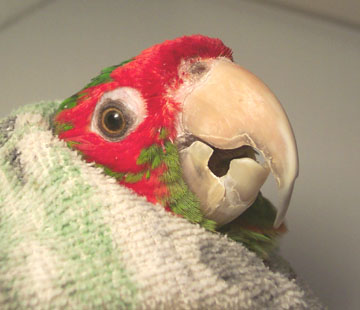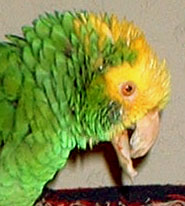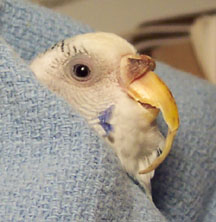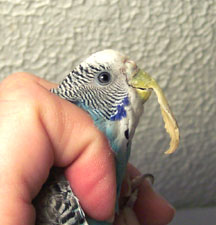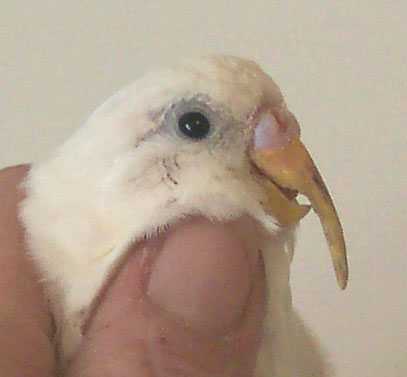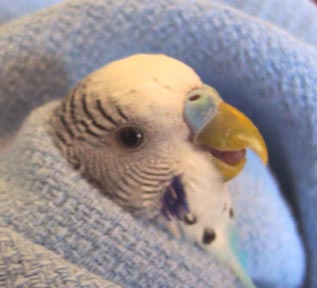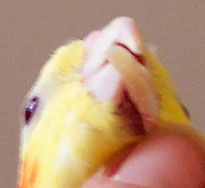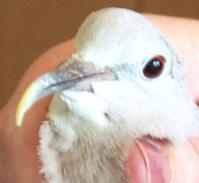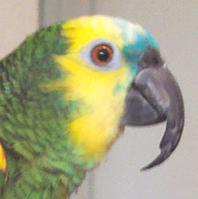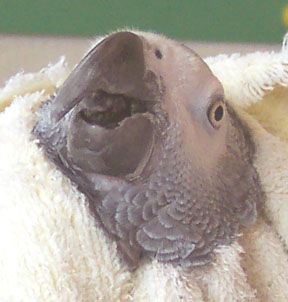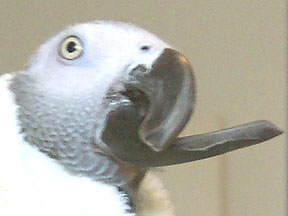Yes, these birds need a beak trim, but your bird probably doesn't!
Updated On: 8/21/2021
Every species has it's own normal length and shape for the beak. These three Amazon Parrots have mildly to moderately overgrown upper beaks. You have to be careful about trimming too much, as there is a blood supply inside that will cause a lot of pain and bleeding if you cut into it.
This Mitred Conure has an overgrown lower beak with a piece that has broken off. The upper beak overgrows on the other side. His upper and lower beaks are slightly out of alignment, causing them not to wear down like they would in most birds.
Most birds can go a lifetime without ever needing to have their beaks trimmed. If there is a birth defect, injury, or disease affecting the beak, parts of it may not wear down properly and require our help to get back to normal. We do not suggest that anyone try to trim a bird's beak themselves. It is very easy to hurt them!
Birds can often function quite normally even with severe beak deformities. This Amazon developed a loss of curvature in her lower beak a few years ago, but manages to eat just fine. These are her before and after photos during her last trim.
These three little parakeets all have chronic problems with beak overgrowth that require trimming every few months. Some beak problems may be cured with a single trim, while others will always need periodic maintenance no matter how short we cut or file them.
These two parakeets volunteered their pictures to demonstrate both the normal length of their beaks, and the difference between a male and female parakeet. In this species, the male has a blue cere, the area of skin above the beak surrounding the nostrils. Mature females will have a beige or brown color, and the skin will become thickened and rough. Our thanks to Charlie Ellis and Kermit Feiertag for modeling for our website.
In some cases we suspect liver disease as a cause of beak overgrowth. The beak will appear irregular on the surface, and may break easily. There can be dark spots in the beak and toenails.
This little cockatiel had a slight injury to his lower beak, which eventually led to a split that cannot be repaired. He is able to eat just fine with periodic trims.
This dove has mild beak overgrowth. Chewing on toys and cuttlebones or mineral blocks can help keep the beak worn down properly. Calcium deficiency could have been a cause in this bird's case.
These are the before and after pictures of an African Grey Parrot with "scissor beak". If the bird had been seen as a baby, we could have applied dental acrylics to help force the beaks into better alignment just like braces for a human. Since the bird is an adult, all we can do is trim and file it periodically.
We are not sure how this Quaker broke off part of his upper beak overnight in his cage. It will probably grow back, but some birds that lose a portion of the beak may never regrow it.
Close this page to return to more Frequently Asked Questions.
Burge Bird Services
Julie Burge, DVM
13833 S. 71 Hwy
Grandview, MO 64030
(816) 356-4700
Burge Bird Services
Julie Burge, DVM
13833 S. 71 Hwy
Grandview, MO 64030
(816) 356-4700

